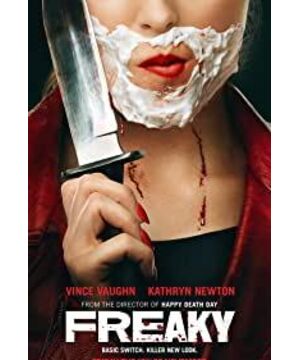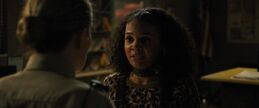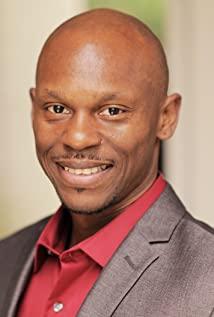When it comes to Blumhouse, I believe that many fans will be relatively unfamiliar with this name. But if you look at the many films produced by this company attached to Universal Pictures, you should have seen it more or less. For example, Oscar hit movies like "Blunker" and "BlacKkKlansman" were developed by them.
However, the company is more known for producing low-budget horror films. The popular "Human Removal Plan", "Escape from the Dead Town" and "Hidden 2" in the past few years, or the dark horse upstarts in recent years such as "Happy Death Day", "Upgrade", and even the highly acclaimed "The Invisible Man" this year, etc. The videos are all from this company.
In terms of popularity, perhaps Blumhouse is not as good as A24, which is also deeply involved in independent genre films. However, compared with A24's more stylized and author-oriented production strategy, Blumhouse wins more with creativity, its audience is wider, and its commercial achievements are also better. As a result, it is often hailed by the industry as a new Hollywood horror film professional.
After the amazing results of the previous work "The Invisible Man", the epidemic situation in North America is still not optimistic; but even so, there is still a film that has aroused widespread heated discussion among North American fans. Now, this heat has also spread to Asia on the other side of the ocean.
This is the popular new work "Happy Killing" that we are going to recommend today, also translated as "Swap Body". And in a way, this movie also inherits the spirit of The Invisible Man. The director of the film is Christopher Langdon, who has previously been well-received for his two "Happy Death Day" films, and he also serves as the screenwriter.
Audiences familiar with the "Happy Death Day" series will know that the director is very good at combining a certain clever high concept with traditional horror film models to create a work that looks brand new. The main inspiration of its predecessor came from the classic film "Groundhog Day".
And when it comes to this new work "Happy Killing People", we can naturally directly see the core high concept of the film, which is "swap bodies", under the prompt of another translation.
Even though this concept is not so new now, for Christopher Langdon, who is still a new generation of directors, he has really made this film reach the goal of the film by virtue of his younger personal experience and keen observation of the social status quo. to a more realistic level.
The film opens with a red version of Universal's opening title, disturbing music, and bold blood-colored graffiti, and the director sets the tone for the film. We then learn that the killer will start his killing operation during Homecoming.
Unsurprisingly, the tall and powerful murderer appeared wearing a mask, and thus launched a series of terrifying but wonderful "killing performances", which left a deep impression on us with the generous blood and realistic killing props.
This part of the opening, which is independent of the main line, is a very typical "murderer type film" shooting method. According to the current statement, this horror film sub-genre was first pioneered by John Carpenter's "Moonlight Panic" series, and later series such as "Nightmare Street" and "Scream" are also the same. representative of the type.
The fear that this type brings to us mainly comes from the helplessness and despair of innocent victims when they are chased by the murderer; but in the development of many years, the survival of the victims is often regarded as a victory in the end.
However, it is undeniable that such scenes undoubtedly have some exploitative connotations, especially when the massacre has gradually evolved into a niche interest, and even many viewers' viewing positions will tilt from the victim to the murderer. And because the victims are often women, many shots have an indescribably complex meaning under the strong male gaze. In today's era of advocating equal rights, it is actually more inappropriate.
Therefore, this film also chooses to open in a way of reproduction of a classic mode, which can be understood as a tribute, or as a pre-arranged criticism and negation.
Subsequently, the film introduces the identity and background of the heroine Millie in a sketchy way: she is in a family where males are absent, with a slightly cowardly and silent character, she silently likes a boy, and she does not get very much in school. Good treatment comes with the possibility of being bullied at any time.
At the same time, the film also makes quick mentions of two main characters: a black girl and a gay boy. The director easily explained the general image of the characters through their lines and actions, and fit the current fashion - social network in a playful way.
After the completion of sufficient preparations, the pre-announced Homecoming came. The killer's protagonist, "The Butcher," debuts in smoke and lore, and the beginning of the slaughter is marked by the disappearance of social networks (mobile phones run out), suggesting a throwback to this moment.
Then, the film leads the characters to start the main story line with a tough, fantastical setting, that is, from the accidental exchange of bodies between the murderer and the victim protagonist.
The film shows the process of the two people from not adapting to adapting after switching bodies, and the whole part is very humorous. The performances of the two actors also successfully showed the contrast after the exchange, which is easily reminiscent of the hit "Your Name" a few years ago.
But the exchange of bodies is not only limited to external images and signs, but more importantly, the exchange of social identities. The butcher is not used to a basic family life, and he cannot comfortably enjoy an early morning with a hearty breakfast.
And Millie can no longer walk safely in social spaces because of her dangerous body. Long in a position of oppression, she is now the embodiment of fear, causing chaos in the streets.
From a certain point of view, this part of the passage can be regarded as a metaphorical process of sexual transformation, and it is also the process of the two adapting to another gender. And Millie's friend's initial misidentification represents not only a fear of criminals, but also a fear of minorities. The shared private experience in the process of interpretation finally dissolves this layer of separation, and also emphasizes the importance of authentic connections between people, rather than various images and identities that remain on the surface.
During the development of the story, the two characters actually share some commonalities, and they seem to share their own painful experiences. The murderer "Butcher" also used intimidation and extreme violence to take revenge on the target who had bullied Millie. They reached a settlement of their rigid kinship by taking radically different approaches to each other.
The most interesting part of the film is the introduction of a large number of non-offensive comedy sequences. In addition to the initial contrasting jokes created by the actions of the characters, the gender jokes created by many lines that are specific to the current era are equally hilarious, so that the horror film itself does not seem so heavy.
The topics that the director tries to cover are also quite rich. In addition to the issues of school violence and native family issues that were often discussed in horror films before, the involvement of feminism and LGBTQ elements was rarely seen before.
The real danger is not only the absolute murderer, but more from our side, the secondary injury to the victim, the slut humiliation of women, etc. It can be seen that the film is full of full humanistic care.
Even more rare is that there is hardly any hint of exploitation in this film. Although Millie is in a more active position, in fact she and the "killer" are working together to complete the search. As the protagonist, Millie obviously has a very complete and comprehensive growth line.
A conversation between Millie and her friend in the car undoubtedly points to the final theme of the film: growing up. Yes, "Strength is not calculated by body size, but comes from the brain and the heart." The so-called powerful strength must not have overpowering violence, but bravely face everything, and at the same time strive to maintain the basis of life And everything for people.
This thinking is also fully fulfilled in the supplementary paragraphs at the end of the film. After the end of the body exchange, Millie finally dared to face herself and had the courage to move forward calmly, thus completing the final step of her growth. At the same time, Millie also reaped the "rewards of victory" that belonged to her: a closer friendship, a love that finally sprouted, and a family that understood each other.
Although most of the innovations in this film only stay at the conceptual level, in essence it is still a routine horror film format. But in these bewildering times, such an interesting attempt is obviously very valuable. The rich little details in the film also reveal the director's careful observation of life and his effective imagination.
Reasonable humanistic care, sufficient genre elements, and pleasant viewing experience make this new work not to be underestimated. Despite mixed reviews from audiences, at least in my opinion, it's a genre movie that can't be missed this year.
Author | Deka's Sheep; Public Number | Watching Movies and Seeing Death
Editor | Teenager on the Roof; Please indicate the source for reprinting
View more about Freaky reviews











